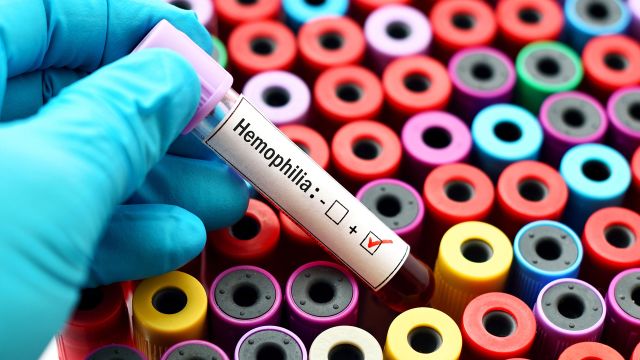Hemophilia is a rare bleeding disorder where blood lacks adequate amounts of clotting factor—proteins in the blood that help the body stop bleeding when it is injured—or have clotting factor that doesn’t work properly. As a result, people who have hemophilia will bleed for longer periods of time after sustaining a cut or an injury. They may also bruise more easily and experience internal bleeding in the joints.
Causes of hemophilia
The vast majority of people affected by hemophilia are male, and the disorder is very rare among females. This is due to the underlying cause of most cases of hemophilia—a faulty gene on the X chromosome, which is inherited from a person’s mother and is responsible for the production of clotting factor. Since females have two X chromosomes, one inherited from the mother and one from the father, it is statistically rare for a female to have a faulty clotting factor gene in both chromosomes. However, it can and does happen.
There are a number of people with hemophilia do not have a family history of the disorder. In some of these cases, hemophilia may be the result of a spontaneous genetic mutation. In other cases, they may have an unknown family history, where relatives in previous generations went undiagnosed, possibly due to having a very mild form of the disorder.
Hemophilia A, B and C
There are several types of hemophilia. The major differences between hemophilia types are the specific clotting factors that each affects. The most common form is hemophilia A, which affects the production of clotting factor VIII (“clotting factor 8”). Because it is the most common form, hemophilia A is sometimes referred to as “classic hemophilia.” Hemophilia B is more rare, and accounts for about 20 percent of hemophilia cases in the U.S. Type B affects the production of clotting factor IX (“clotting factor 9”).
Hemophilia C is very rare. However, it is common among Jewish people of Eastern and Central European ancestry. Hemophilia C affects production of clotting factor XI (“clotting factor 11”), and is also known as factor XI deficiency.
Knowing the type of hemophilia is important to treatment, and type can be determined with a blood test. The main treatment for hemophilia is infusions with clotting factor concentrations. These are usually given on a regular basis as a preventative measure, but may also be given after a person experiences an episode of bleeding or an injury. Because concentrates of clotting factor XI are not available in the United States (though they are available in Europe), other treatment methods must be used for patients who have hemophilia C.
Acquired hemophilia
There is also a rare type of hemophilia called acquired hemophilia. This type is different because it is caused by an autoimmune response, and that it occurs later in life. This type occurs when the immune system produces antibodies that attack clotting factor in the blood—in most cases, clotting factor VIII, the same clotting factor affected by hemophilia A. Acquired hemophilia is very rare. It most often occurs in the elderly, and is associated with a long list of disorders and health conditions, ranging from autoimmune and inflammatory diseases, to diabetes, chronic infections and cancer. In rare cases, it might occur as a result of pregnancy.
Medically reviewed in March 2020.





